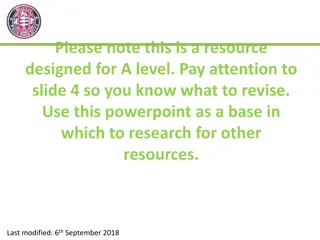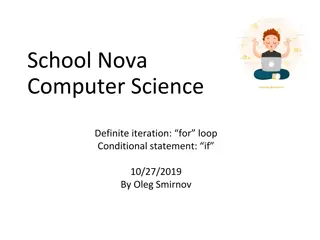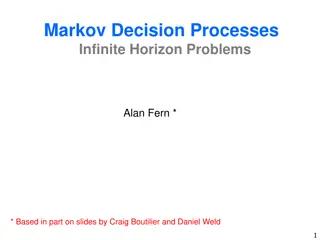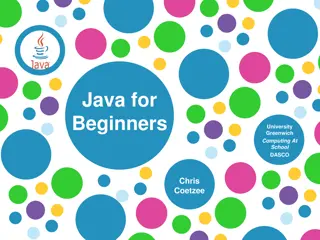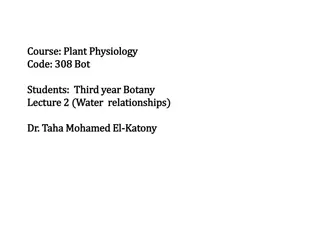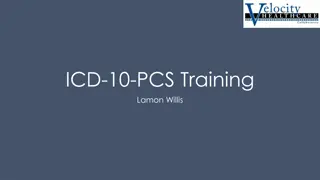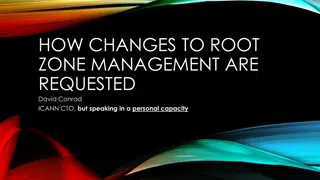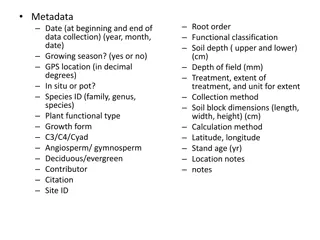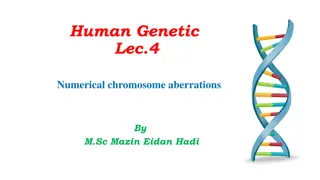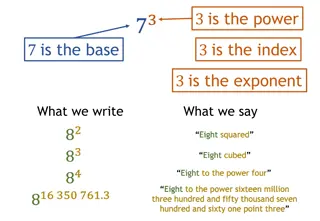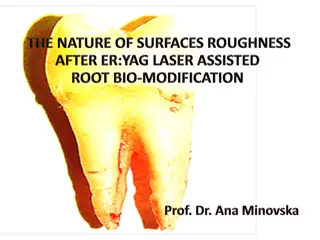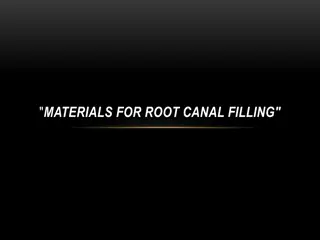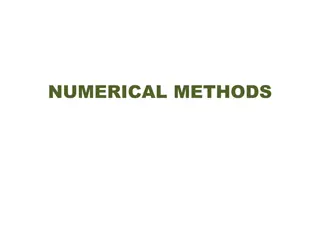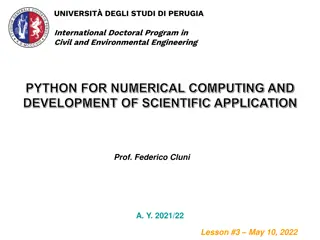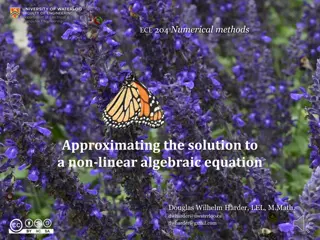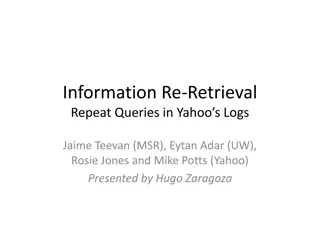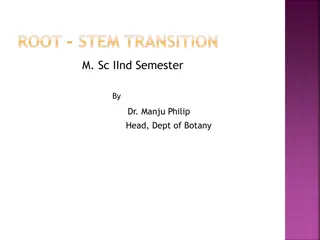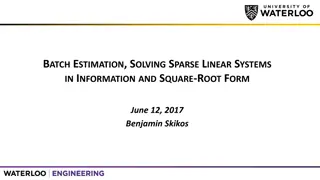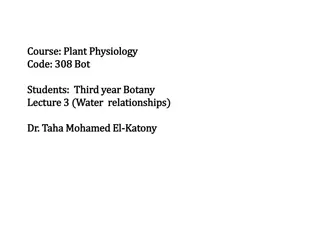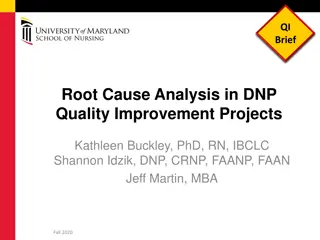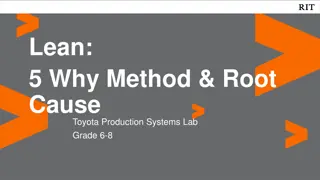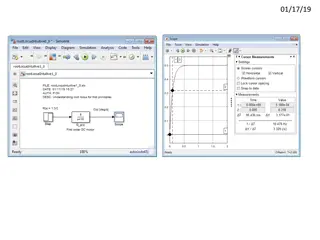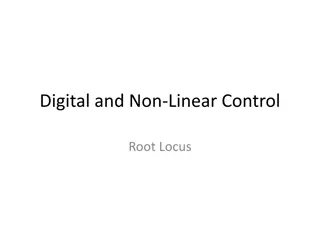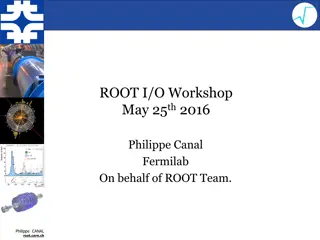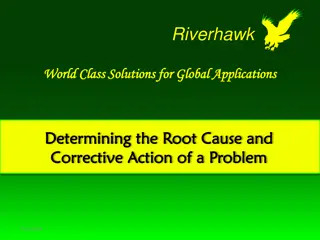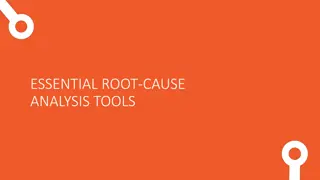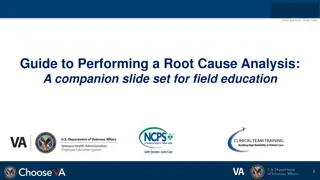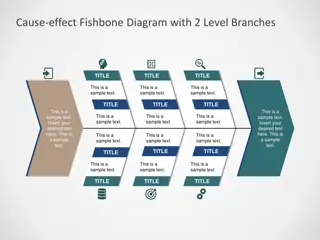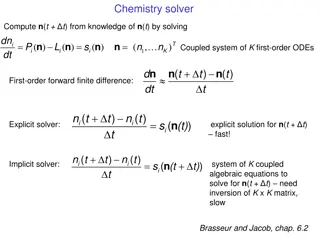Understanding Numerical Methods for Root Finding and Iteration
Explore the concepts of root finding, locating roots, stationary points, and iteration in numerical methods. Learn to determine roots, stationary points, and convergence/divergence types, as well as apply the Newton-Raphson method for function approximation.
Download Presentation

Please find below an Image/Link to download the presentation.
The content on the website is provided AS IS for your information and personal use only. It may not be sold, licensed, or shared on other websites without obtaining consent from the author. Download presentation by click this link. If you encounter any issues during the download, it is possible that the publisher has removed the file from their server.
E N D
Presentation Transcript
Chapter 10 Chapter 10- - Numerical methods Numerical methods
Locating roots (10.1) Locating roots (10.1)
1 Where does the function ? ? = 4 ?+ 3 have at least one root? 1 a) 3.9 < ? < 4.1 b) 4.1 < ? < 4.4 d) 3.6 < ? < 3.9 c) 4.1 < ? < 4.3
2 Where does the function ? ? = cos2(?) ? 2? have a stationary point? a) 1.2 < ? < 1.4 b) 1.3 < ? < 1.4 d) 3.2 < ? < 3.3 c) 3.1 < ? < 3.2
3 Where does the function ? ? = sin 2? + ?4? have a stationary point? a) 0.3 < ? < 0.1 b) 0.7 < ? < 0.5 d) 0.9 < ? < 0.8 c) 1.0 < ? < 0.9
Iteration (10.2) Iteration (10.2)
Which of the following is not a rearrangement of ?5 ?2 20 = 0? 1 31 +20 5?2+ 20 b) ? = a) ? = ?2 c) ? = 20? 4+ ? 2 d) ? = 20 ?5
Describe the type of convergence/ divergence produced in the table below: 2 b) Staircase convergence a) Cobweb convergence d) Staircase divergence c) Cobweb divergence
Describe the type of convergence/ divergence produced in the table below: 3 b) Staircase convergence a) Cobweb convergence d) Staircase divergence c) Cobweb divergence
Describe the type of convergence/ divergence produced in the table below: 4 b) Staircase convergence a) Cobweb convergence d) Staircase divergence c) Cobweb divergence
The Newton The Newton- -Raphson method (10.3) Raphson method (10.3)
1 Using ?0= 3 as a first approximation, use the Newton s Raphson method to compute ?1 of the following: ? ? = ?4 10?2 11. a) 3.5001 b) 3.4101 d) 3.4167 c) 3.4892
2 Using ?0= 1 as a first approximation, use the Newton s Raphson method to compute ?1 of the following: ? ? = 4?3+ ? 7. a) 1.2109 b) 1.1555 d) 1.2001 c) 1.1538
3 Using ?0= 1 as a first approximation, use the Newton s Raphson method to compute ?1 of the following: ? ? = 2?3 cos(?). a) 0.7901 b) 0.7866 d) 0.7861 c) 0.7822
Applications to modelling (10.4) Applications to modelling (10.4)
1 A boomerang is thrown from a point on level ground. The height in metres of the boomerang above the ground ? seconds after it is thrown can be modelled by the function ?2 36. When does the boomerang hit the ground? (?) = 50sin a) 10 < ? < 11 b) 11 < ? < 12 d) 12 < ? < 13 c) 9 < ? < 10
2 The value of a mobile phone, t years After purchase , is modelled by the function ? ? = 450e 0.5t 40cos t ,t > 0. When does the function have a value of nothing? a) 1 < ? < 3 b) 3 < ? < 4 d) 5 < ? < 6 c) 4 < ? < 5


